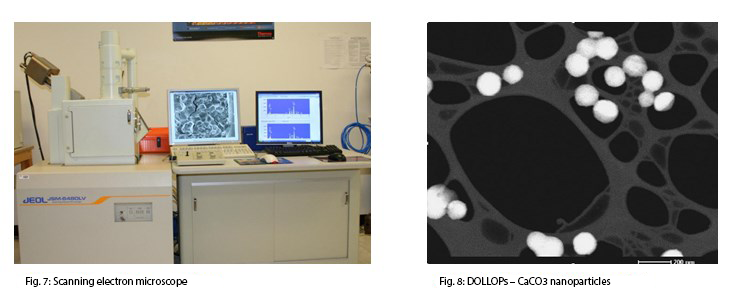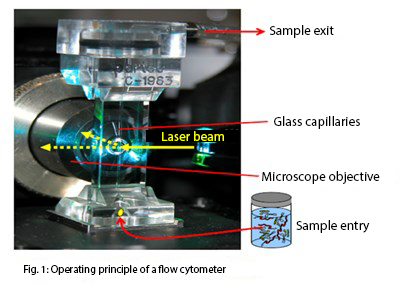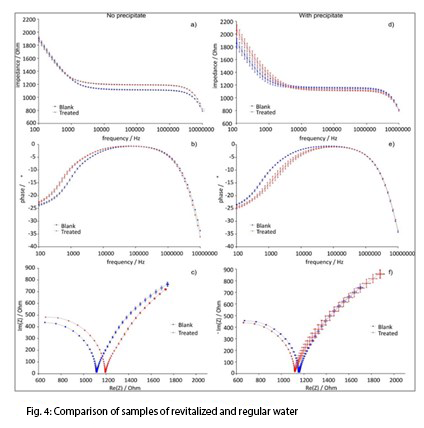Methods of Measurement in Water Analysis
Scanning electron microscopy (SEM)
A scanning electron microscope is used to focus a beam of electrons on an object to scan its surface in a given pattern. The interactions between the electrons and the object are used to generate an image of the object to be magnified. The resulting images of the sampled object’s surface exhibit a very large depth of field.

Example of application in GRANDER research:
observation of calcium carbonate nanoparticles in revitalized and regular water.
(Results: following a revitalization of the water with GRANDER, DOLLOP formation was increased. DOLLOPs can act as crystal nuclei, and, as such, influence lime deposit behavior.)
Flow cytometry
In flow cytometry, individual cells flowing past an electric-voltage or light source (laser beams in most setups) at high speed are analyzed. Depending on the cells’ shape, structure, and color, various effects are produced, from which the properties of individual cells can be deduced.

Flow cytometry takes stock of 99% of the bacteria in the water and can even distinguish between living and dead cells. The time required for testing a sample is only one hour.
Example of application in GRANDER research:
the number of CaCO3 nanoparticles (DOLLOPs) was measured using flow cytometry.

Impedance spectroscopy
An AC current is generated in a measuring cell filled with the water to be tested. In doing so, the AC current’s frequency is modified, and the electrical AC resistance (impedance) and the phase shift of the sample are established.

Example of application in GRANDER research:
measurement of the AC resistance (impedance).
(Results: varying with frequency, significant differences between samples of regular water and revitalized water could be observed.)

